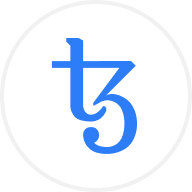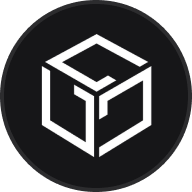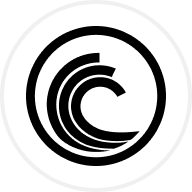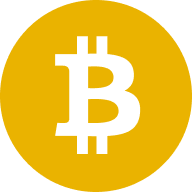The Sandbox es un mundo virtual descentralizado en la blockchain de Ethereum donde puedes crear, compartir y monetizar activos y juegos voxel. The Sandbox es una plataforma basada en Ethereum con el modelo jugar-para-ganar (P2E) cuyos creadores pretenden crear una experiencia inmersiva en el metaverso sin una autoridad centralizada.
Los juegos tradicionales de construcción de mundos virtuales basados en vóxeles, como Minecraft, son juegos centralizados en los que los usuarios no tienen propiedad sobre sus creaciones ni sobre el juego. The Sandbox resuelve este problema permitiendo a los jugadores construir y monetizar experiencias de juego en la blockchain de Ethereum.
A diferencia de los juegos tradicionales, en los que los activos del juego existen en el servidor de la empresa correspondiente, cada objeto del metaverso de The Sandbox es un token no fungible (NFT) que se puede intercambiar libremente en la blockchain de Ethereum, lo que otorga al usuario la propiedad completa del objeto del juego. De este modo, los creadores de The Sandbox tienen la propiedad real de sus creaciones a través de estos NFT. Además, son recompensados por su participación con SAND, el token de utilidad de la red.
Dado que el ecosistema de The Sandbox funciona con la blockchain de Ethereum, toda la ejecución de los contratos inteligentes, las transferencias de NFT, las transacciones de criptomonedas y el mantenimiento de registros son facilitados por la red Ethereum. Esto se hace a través de tres productos básicos que alimentan estas funciones para ayudar a los usuarios a crear su mundo virtual. Se trata de VoxEdit, Marketplace y Game Maker.
VoxEdit es un paquete de modelado voxel de uso gratuito que permite a los usuarios crear y animar objetos 3D. Estos objetos se pueden exportar al mercado de The Sandbox como ASSETS del juego. El mercado es una tienda web que conecta a compradores y vendedores que hacen trading con NFT de activos. Permite a los usuarios subir, publicar y vender sus ASSETS como tokens ERC-721 y ERC-1155.
Por último, Game Maker permite a los usuarios añadir mecánicas de juego a sus activos vóxel a través de nodos de scripting visual, lo que permite a los usuarios crear una experiencia de juego atractiva en su parcela de LAND adquirida. Los usuarios también pueden utilizar Game Maker para colocar activos voxel en su LAND de The Sandbox. LAND también puede albergar concursos y eventos, monetizar activos, jugar y crear juegos, votar en la gobernanza del metaverso de The Sandbox y hacer staking de tokens SAND. Hay un máximo de 166.464 LANDS disponibles.
SAND: el token nativo de The Sandbox
SAND es un token ERC-20 que se utiliza, entre otras cosas, para realizar transacciones dentro de la plataforma. Los jugadores gastan SAND para acceder y jugar, comprar equipamiento y personalizar sus avatares. Los SAND también pueden utilizarse para comprar activos y LAND.
Otro token nativo del metaverso de The Sandbox son los tokens ASSET, que pueden comprarse y venderse con SAND. Los usuarios pueden crear y vender tokens ASSET en el mercado como NFT que representan objetos del juego.
SAND también funciona como un token de gobernanza. Los titulares pueden votar en las decisiones relativas al futuro de The Sandbox a través de la organización autónoma descentralizada (DAO) de la plataforma.
Los SAND también se pueden hacer staking, lo que permite obtener ingresos pasivos. Además, los tokens SAND apostados también pueden obtener rendimiento en forma de valiosas Gemas y Catalizadores, que se utilizan para la creación de ASSET.
Precio de SAND y tokenomics
SAND es un token deflacionario con un suministro finito de 3.000 millones. De la oferta total, 360 millones de SAND fueron asignados a la venta de la plataforma de lanzamiento, el 17,8 % se mantuvo para la ronda de venta de semillas, y el 4 % de los tokens SAND fueron distribuidos durante una venta estratégica en julio de 2020.
Del suministro restante de SAND, el 12 % de los tokens fueron entregados a la Sandbox Foundation, el 25,82 % fue destinado a reservas, el 19 % de los tokens SAND fueron distribuidos a los fundadores y al equipo, y el 10 % de los tokens SAND fueron pagados a los asesores.
La venta inicial y la venta estratégica tienen un límite de 12 meses, tras el cual se desbloquea el 20 % de los tokens cada seis meses.
Los ingresos generados por The Sandbox se distribuyen entre cuatro partes interesadas para garantizar el apoyo continuo a su ecosistema de jugadores y creadores. Estos tokens se distribuyen entre el pool de la fundación, el fondo de staking, la tesorería de la empresa y la reserva de la empresa.
Acerca de los fundadores
El proyecto The Sandbox fue fundado en 2012 por Sébastien Borget, ahora Director de Operaciones de The Sandbox, y el Director Ejecutivo, Arthur Madrid.
Construido por Pixowl, una empresa de desarrollo de juegos para móviles de San Francisco, The Sandbox se lanzó inicialmente como un juego 2D para móviles, que más de 40 millones de personas descargaron.
En enero de 2018, The Sandbox decidió desarrollar una versión 3D del juego en Ethereum. Además, el equipo de The Sandbox quería proporcionar a los jugadores el 100 % de propiedad sobre sus artículos en el juego y la capacidad de monetizar su juego y sus activos. Más tarde, en agosto de 2018, Animoca Brands, el desarrollador líder de juegos blockchain, adquirió Pixowl.
Para financiar su visión, The Sandbox recaudó 6,8 millones de dólares en tres ventas de tokens en 2019 y 2020. Además, la compañía anunció una subvención de 2 millones de dólares para que los creadores creen y publiquen arte voxel en la plataforma de The Sandbox.













